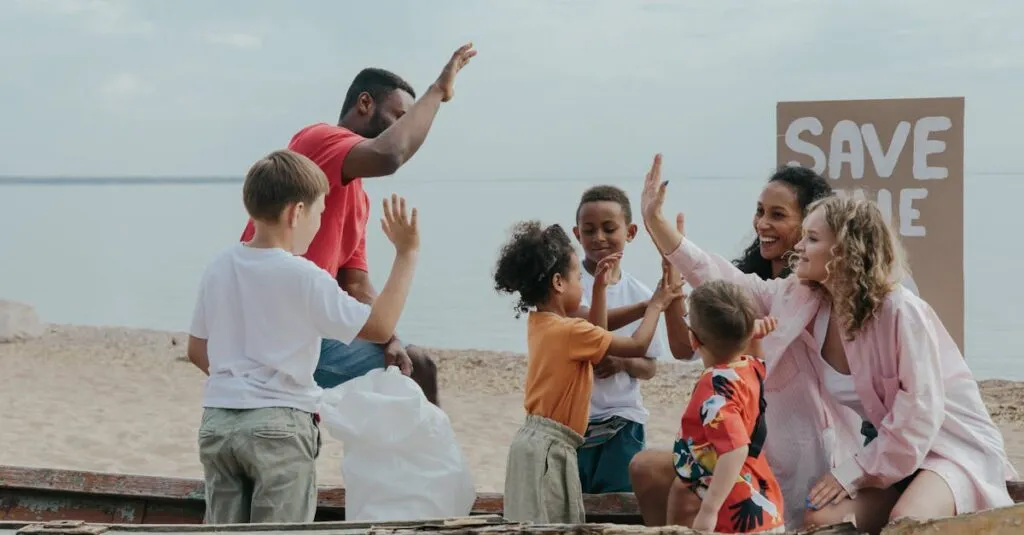Why Humility Matters in Early Years
Teaching the value of humility to preschoolers is like planting a seed that will grow into a mighty tree. It’s essential not just for spiritual growth, but for social development too. When children learn they’re not the center of the universe, they become better team players and more empathetic friends.
Consider humility a superpower that equips your little ones for life. I recall my son’s face when he learned to share his toys voluntarily—his glee far exceeded his disappointment. Teaching humility isn’t a one-time lesson; it’s a journey, where every mistake becomes a stepping stone towards growth.
Remember, it’s okay to let kids stumble as they learn their way. Images could depict children happily sharing toys or helping friends, underscoring the joy found in humility.

Fun Ways to Teach Humility
Innovative, playful ways make teaching humility both effective and enjoyable for preschoolers. Here are some engaging strategies:
Role-Playing Exercises
Try role-playing exercises where your child acts as the teacher’s assistant, helping fellow classmates. This not only teaches humility but also fosters a sense of responsibility.
Kindness Corner
Turn the dinner table into a ‘kindness corner’, where each member shares something humble they did that day. This encourages reflection and gratitude among family members.
Listening Games
Games like ‘who can listen longest’ teach them patience, which is closely related to humility. Encourage children to be attentive listeners to each other.
The Power of Humor
Humor can be a great teacher too—I once told my boy that even superheroes need help putting on their socks! This light-hearted approach can help children understand the concept of asking for help.
Engage with Your Kids
Smile and engage with your kids through these activities. Your enthusiasm will inspire them to embrace humility in their daily lives.
Visual Inspiration
Suitable images might involve preschoolers in group activities or smiling while assisting each other.

By incorporating these fun and interactive strategies, teaching humility to preschoolers can be a rewarding journey for both parents and children.
Handle the ‘Me First’ Syndrome
The ‘Me First’ syndrome hits kids hard—yet it’s as common as bedtime story book battles. While it’s natural, parents know it can escalate quicker than a toddler turning down vegetables.
The trick is converting this energy into teamwork. Encourage taking turns as a fun game, not a chore. Celebrate when your kid lets others go first. My daughter’s eyes twinkled when she got a ‘patience award’ for waiting patiently in line at a fair. These small moments count massively.
Tips for Encouraging Patience
- Make turn-taking a fun game.
- Celebrate moments of patience with awards or recognition.
- Share stories about the importance of waiting and teamwork.
For images, capture instances of kids waiting in line or hoisting a ‘patience trophy’ with joy.

Learning Through Stories and Play
Children understand best through stories and play. Narratives from the Bible, such as the Good Samaritan, powerfully illustrate virtues like humility. You can recreate this tale through interactive play.
Creative Storytelling Activities
Consider some of the following ideas to engage children:
- Create Popsicle stick puppets to retell the story during a Sunday afternoon craft session.
- Incorporate their favorite superheroes—have them ‘team up’ for a mission, demonstrating that sharing the spotlight can be truly heroic.
- Share personal stories of learning humility, such as the amusing moment when I took the last cookie and blamed it on the cat.
Visual Aids
To enhance the storytelling experience, consider using illustrative images, such as:
- Children’s DIY puppets.
- Kids engaged in a playful rendition of a Bible story.
Here’s an image that resonates with this theme:

Building a Supportive Environment
Create an environment that breathes humility. Encourage open dialogue where kids freely express themselves yet honor the opinions of others. Set a ‘humble jar’ where family members toss in notes about each other’s humble acts.
Weekly, review these over a snack session. My family found unexpected joy and bonding moments doing this—it became a cherished ritual.
Environments encouraging group activities rather than solitary ones emphasize community.
Images to suit this section could reflect family interaction around tables or kids engaged in team activities, promoting the idea of unity and shared effort.

